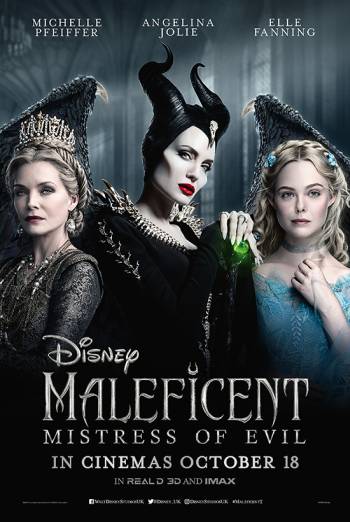Maleficent: Mistress of Evil flaunts formidable female villains

More stories from Natalie Mix

The anguished cries of a soul whose pride and joy has been stripped from them.
Angelina Jolie’s nuanced and lyrical facial expressions.
The endearing relationship between a delicate princess of light and a hardened mistress of evil.
Disney’s 2014 Maleficent was peppered with theatrical gems, and it paved the cobblestone path to the iconic beaming castle of live-action remakes. It established a surface level understanding of a world that expanded in size and complexity in Disney’s new film, Maleficent: Mistress of Evil.
Following the recent crowning of Elle Fanning’s Aurora as the queen of the Moors, the movie begins with an engagement between Aurora and Prince Philip, portrayed by the dashing Harris Dickinson. In celebration, Aurora and her begrudging godmother, Maleficent (Jolie), make an appearance at the castle for dinner. But the immediate chemistry between Maleficent and Philip’s mother (Michelle Pfeiffer) is a recipe for catastrophe.
Immediately, it was delightfully evident to me that the female presence in this film would exude unadulterated power. Jolie’s Maleficent is a vivid example of why female villains bring joy to my heart, and Pfeiffer as Queen Ingrith joined that list.
With methodical movements, impassioned, eloquent deliverance of lines, and stunning costumes, Pfeiffer and Jolie each portrayed a different type of villain. For the first portion of the movie, I was endlessly mesmerized by the elegant portrayal of formidable females. Paired with the medieval fantasy vibes I so adore, I was in a cinematic paradise.
The second half of the movie, however, while of satisfactory quality, failed to meet the standards set by the first half.
For one, Maleficent seemed to fall off the face of the earth for periods of time as the story focused on additional plots. While this was a fine decision, Jolie’s portrayal of Maleficent—as well as her trademark cheekbones—is what drew me to the film initially, and her lacking presence factored into my enjoyment.
And for another, my dissatisfaction with Fanning as Aurora increased steadily every time she appeared on the screen. It wasn’t so much her talent in acting but the overall presence she seemed to present her character with. The mood of the film spoke of darker themes, and Fanning’s Aurora didn’t fit within that.
I consistently got the idea that I was supposed to perceive her as strong and persevering, but all I could truly pick up on was “cliché Disney princess.” Her appearance on screen never failed to remind me that I was watching a Disney fairytale, and I struggled to keep from rolling my eyes at the manner with which she delivered certain lines.
Subtracting her presence from the movie left a story of war and the complicated morals attached to it. Despite the Disney stamp on the story, it managed to speak mature themes and teach important lessons.
However, Maleficent: Mistress of Evil certainly did not lack in its fair share of cliché Disney moments. It was the perfect cocktail of childhood allusions and relevant subject matter.
I can’t say I didn’t desire more of Angelina Jolie’s presence, and I noted a couple of disappointments, but on the whole, Maleficent: Mistress of Evil was more of what was so attractive about its predecessor.
In the same manner that the 2014 Maleficent opened the door to a myriad of live-action remakes, Maleficent: Mistress of Evil opened the door to hopeful consecutive chapters of an elaborate tale.

Natalie Mix is a senior taking on her fourth and final year as a member of The Central Trend. Room 139/140 and the staff of The Central Trend have been...


























































































